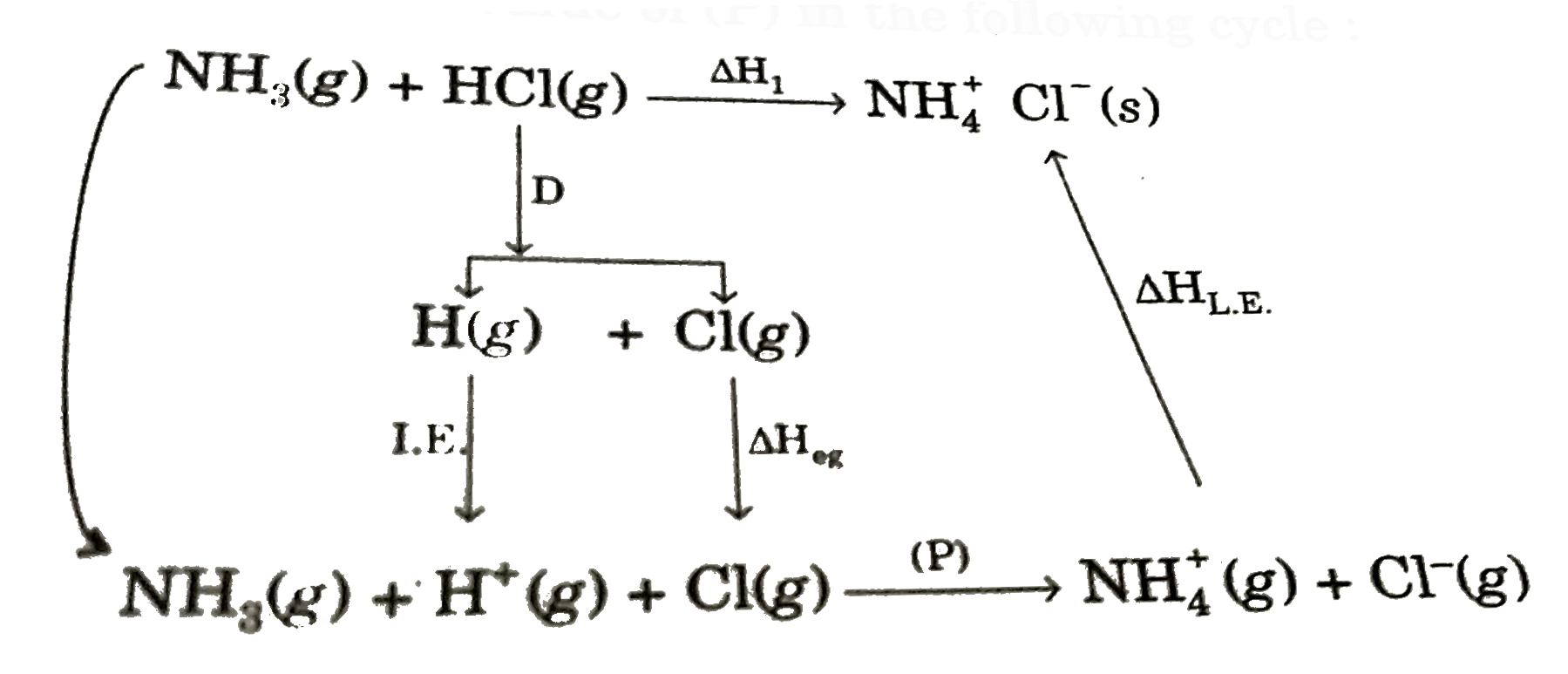With the help of the following equation and data choose the wrong statement .
I.  Eact=+435.1kJ
Eact=+435.1kJ
II.  Eact=+410.0kJ
Eact=+410.0kJ
III.  Eact=+368.0kJ
Eact=+368.0kJ
IV.  Eact=+343.0kJ
Eact=+343.0kJ
V.  Eact=355.6kJ
Eact=355.6kJ
(a) Thermal creaking of (C--H) bond of methane occurs at 1500 K and that of (C--H) bond of ethen break at 800 - 900 K.
(b) during homolysis of ethane at high temperature, the (C--C) bond breaks more radily than (C--H) bonds.
(c) During the cracking of n-butane, reaction (IV) occurs more readily than reaction (V).
(d) Formation of CH3C.H2 radical by reaction (II) will take place at lower temperature than the formation of C._(2)H5 radical by reaction (IV).
The correct Answer is:D
Lower the Eact of first step of chain propagatiopn reaction, more easily the bond can be broken. Also this bond breaking will take place comparatively at a lower temperature.
Topper's Solved these Questions
- ALKANES AND CYCLOALKANESBOOK - CENGAGE CHEMISTRYCHAPTER - ALKANES AND CYCLOALKANESEXERCISE - Archives
13 Videos
- ALKANES AND CYCLOALKANESBOOK - CENGAGE CHEMISTRYCHAPTER - ALKANES AND CYCLOALKANESEXERCISE - MCQ
20 Videos
- ALKENES AND ALKADIENESBOOK - CENGAGE CHEMISTRYCHAPTER - ALKENES AND ALKADIENESEXERCISE - Single correct Answer
14 Videos
Similar Questions
Calculate the lattice energy of the reaction
Li⊕(g)+CIΘ(g)→LiCI(s)
from the following data:
ΔsubHΘ(Li)=160.67kJmol−1,12D(CI2)=122.17kJmol−1IP(Li)=520.07kJmol−1,EA(CI)=−365.26kJmol−1 and ΔfHΘ(LiCI)=−401.66kJmol−1
View SolutionFollowing are the values of EaandΔH for three reactions carried out at the same temperature :
I:Ea=20kJmol−1,ΔH=−60kJmol−1
II:Ea=10kJmol−1,ΔH=−20kJmol−1
III:Ea=40kJmol−1,ΔH=+15kJmol−1
If all the three reaction have same frequency factor then fastest and slowest reactions are :
View Solution
Knowledge Check
Find out the value of (P) in the following cycle:

Given ΔH1=−400kJ,I.E.=+50kJ,D=+50kJ,ΔHeg=−30kJ lattice energy −−100kJA−400kJB−300kJC−370kJD−310kJThe E∘ at 25∘C for the following reaction at the indicated concentrations is 1.50 V. Calculate the ΔG in kJ/mol 25∘C :
A−140.94B−295C−212D−422.83Following are the values of Ea and ΔH for three reactions carried out at the same temperature :
I:Ea=20kJmol−1,ΔH=−60kJmol−1
II : Ea=10kJmol−1,ΔH=−20kJmol−1
III: Ea=40kJmol−1,ΔH=+15kJmol−1
If all the three reaction have same frequency factor then fastest and slowest reations are :AFastestSlowestIIIBFastestSlowestIIIIICFastestSlowestIIIIDcan't be predicted
Rate constant k=1.2×103mol−1Ls−1 and Ea=2.0×102kJmol−1. When T→∞:
View SolutionFollowing are the values of Ea and ΔH for three reactions carried out at the same temperature :
I:Ea=20kJmol−1,ΔH=−60kJmol−1
II:Ea=10kJmol−1,ΔH=−20kJmol−1
III:Ea=40kJmol−1,ΔH=+15kJmol−1
If all the three reaction have same frequency factor then fastest and slowest reaction are :
View SolutionWhich of the following ion of an element E (E belongs to 2nd period) having 1s22s0,2p0 electronic configuration in ground state? For the element E following data is given:
IE1 of E=800kJ/moleIE2 of E=1428kJ/mole
IE3 of E=2394kJ/moleIE4 of E=25020kJ/mole
View SolutionWhat is the activation energy for the reverse of this reaction?
N2O4(g)→2NO2(g)
Data for the given reaction is :ΔH=+54kJandEa=+57.2kJ:
View SolutionThe heat of atomization of a compound XY3 in gaseous state is E kJ mol−1 what is the X-Y bond energy of kJ mol−1 unit?
View Solution
